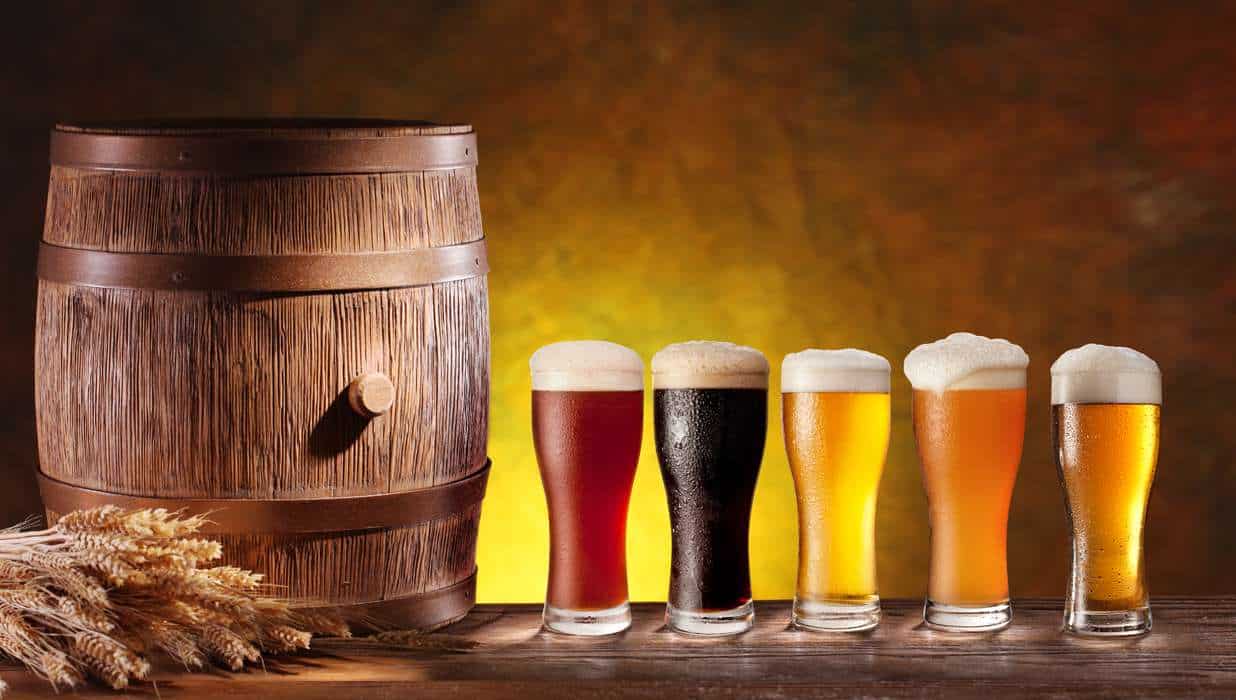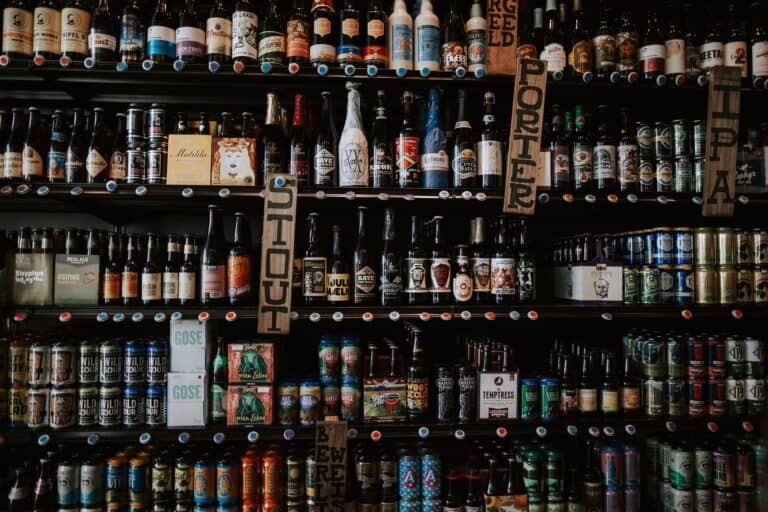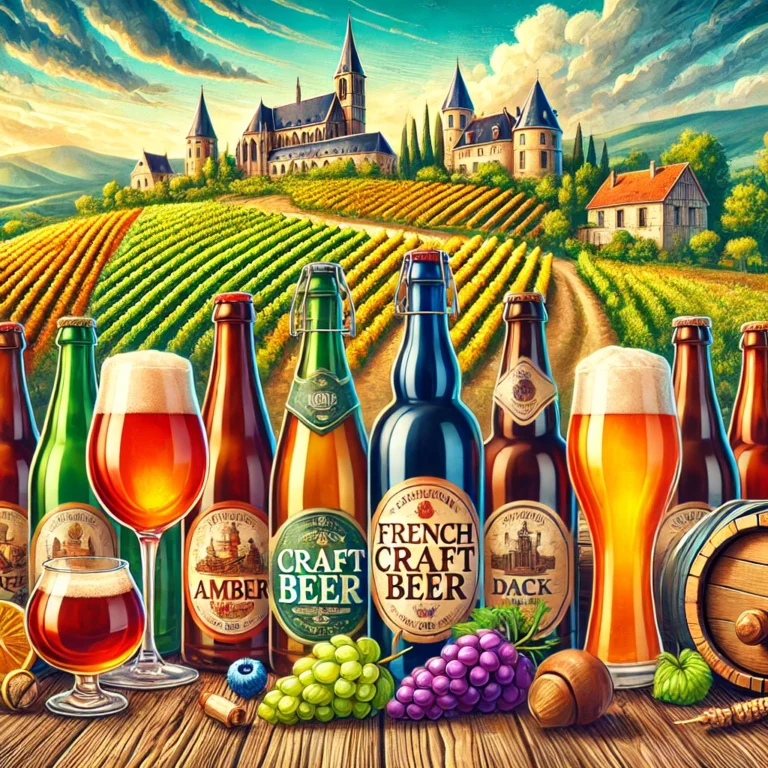Crafting A New Beer Culture: The Rise Of Craft Beer In France
The rise of the craft beer scene became popular in 2000 when young entrepreneurs wanting to shake up this tradition started their styles using locally grown ingredients like wheat from Burgundy or fruit from Normandy. This new wave is where independent microbreweries and bars grow, and a large variety of beer is served according to people’s tastes. Over 2000 microbreweries are operating throughout France, offering consumers a range of creative flavors and styles that go well beyond traditional lagers.
Rise of the Craft Beer Revolution in France
Craft beer is rapidly growing in France. Previously a niche, it has gained popularity. The French have embraced artisanal brewing over the last decade and are now exploring new flavors and ingredients.
French drinkers now seek bold, unique beers. Microbreweries are sprouting up across the country to meet this demand. A shift is underway, changing France’s beer scene. The rise of craft beer shows a desire for new flavors and creativity. Hoppy IPAs and rich stouts are replacing traditional lagers. Beer lovers now celebrate variety in every sip.
Big breweries still lead with mass-market lagers. However, craft beer is gaining popularity. Small breweries are meeting the demand for premium, artisanal brews. This trend reflects a broader movement towards local food and drink. Craft beer’s rise showcases changing consumer tastes and values in today’s market.
France was slow to adopt craft beer, but it’s catching up. New microbreweries are opening every year, sparking a revolution in wine country. The beer scene, once quiet, is now vibrant. It’s introducing new flavors, challenging traditions, and exciting adventurous drinkers nationwide.
French brewers are now making bold IPAs and unique local blends. They experiment with various hops, creating flavors once uncommon in France. This trend shows a growing interest in international beer styles while valuing local tastes. The brewing revival combines tradition and innovation, broadening tastes and challenging norms in French beer.
French craft brewers combine global ideas with local touches. They make high-quality Belgian Saisons and Trappist Dubbels. Additionally, they use regional ingredients like chestnuts and berries. This blend of international methods and local flavors leads to unique beers. It showcases France’s brewing revival. These brewers respect traditions but also innovate. They offer a mix of top craft beer and French essence.
French Craft Beer Styles
France, once famous only for wine, is now a hub for craft beer. Brewers mix tradition with innovation, creating unique flavors. These beers captivate enthusiasts worldwide. From farmhouse ales to bold new types, French craft beer has become a global player, changing perceptions and delighting taste buds.
Bière de Garde is the popular style of craft beer in France. This complex beer features caramel, fruit, and spice notes and captivates craft beer lovers across the country. Its rich flavors showcase the region’s brewing skill.
This brew ages briefly to gain a smooth texture. Its rich flavor pairs well with savory stews and roasts. After months of maturing, it’s bottled or kegged. Thus, it offers a refined taste for hearty appetites. Another popular style is Saison.
Saison is a light ale from Belgium, known for its fruity and spicy notes. It has gained popularity in France. Often, it is dry-hopped with unique ingredients. For example, elderflowers and spruce tips are added. This gives Saison a distinct, crisp profile. Thus, it becomes a refreshing choice for those with refined tastes.
Located near Geneva, Brasserie du Mont Salève makes beers reflecting France’s Alpine spirit. This eastern French brewery uses local ingredients like mountain herbs and wildflowers. Its bold, nature-inspired creations are making waves in the craft beer world.
La Blanche du Mont Salève, infused with coriander and orange, is a refreshing wheat beer. La Rousse, aged in oak, presents a deep, rich flavor. Meanwhile, La Noire combines IPA bitterness with coffee and chocolate. Together, these beers highlight Mont Salève’s brewing expertise. Another top French brewery is Brasserie Castelain.
In 1926, four Belgian brothers founded a brewery in northern France. They created various Bière de Garde beers. Their main brand, Jade, reflects their mother’s wish for pure, preservative-free brewing. This family legacy showcases the diversity of French craft beer. It ranges from traditional Bière de Garde to refreshing Saison, offering a spectrum of flavors for enthusiasts.
French beer culture is changing. Artisanal brewers like Mont Salève and Castelain are leading this shift. They create unique flavors that attract both locals and tourists. Their innovative efforts have revitalized the scene. These special beers provide a new take on French tastes. They invite enthusiasts to explore the country’s vibrant craft beer sector.
The Role of Local Ingredients
Embracing the French Terroir
French craft brewers use local ingredients to showcase their regions. They create unique flavors that reflect their environment, distinguishing craft beer from mass-produced varieties. By sourcing locally, brewers make distinctly French beers that represent their locale.
French brewers enhance their craft by using the country’s diverse agriculture. They add local fruits to beers, reflecting regional characteristics. This method transforms brewing, allowing beer lovers to taste France’s varied landscapes in each sip.
The Brasserie du Mont-Blanc in Chamonix uses Alpine raspberries to create a tart and fruity beer called La Rousse Framboise. Meanwhile, La Débauche brewery in Angoulême incorporates local figs into their Fig Saison for a sweet and slightly spicy taste.
Hops, Grains, and Yeast
Local ingredients also extend beyond fruits and vegetables. Many French brewers seek locally grown hops, grains, and yeast to produce their beers.
Bière de Vézelay in Burgundy uses organic hops grown on a nearby farm for their IPA. Similarly, Brasserie du Pays Flamand in northern France sources its grain from local farmers.
Some breweries even experiment with wild yeast strains found only in certain regions of France. For example, Brasserie Sainte Cru is known for using wild yeast from the Coteaux d’Aix-en-Provence region to create complex farmhouse-style beers.
Showcasing Regional Flavors
French brewers are innovating by combining local ingredients with traditional styles. Some create entirely new beers that highlight regional flavors. For example, Brasseurs de Lorraine offers Mirabelle Plum Ale, featuring Lorraine’s famous fruit. These brewers redefine beer, blending tradition with local character and surprising tastes.
Brasserie Artisanale du Luberon highlights Provence’s flavors in its beers. For instance, Bière au Thym includes local thyme, which is common in regional dishes. This results in a savory, fragrant beer. It shows how craft breweries blend local ingredients with traditional methods.
French craft brewers use local ingredients to create unique beers and support nearby farms. This focus on local resources, or terroir, sets France’s beers apart. So, on your next trip to France, try these regional brews. Each sip showcases local flavors. The craft scene blends tradition with innovation, offering a genuine French experience for beer lovers.
Challenges Faced by French Craft Brewers
The Struggle of Small-scale Brewers in France
France’s craft beer scene is booming, but small brewers face challenging times. Despite the industry’s growth, their financial struggles persist. A major hurdle remains: finding funding. Passionate brewers now fight to keep their businesses and dreams alive.
French small brewers face unique challenges. Limited funds push them to rely on personal savings or close investments. Meanwhile, heavy regulations and taxes hinder their growth and innovation.
Strict rules ensure beer quality but burden small brewers. France’s high beer taxes surpass the European average, adding to the challenge. These obstacles create an unfair advantage for large breweries over small ones.
The Impact of Challenges on the Industry
Economic pressures and regulations hinder innovation in craft brewing. Short on cash, microbreweries avoid new flavors or styles. This cautious approach targets creativity and limits beer variety. Unclear rules also deter risk-taking, leaving potential untapped in craft beer. In turn, consumers may become bored with similar offerings from different breweries.
Small breweries struggle to grow due to limited production. They find it hard to access distribution networks and are often stuck in local venues. This limits their audience. Being small makes it tough to compete with larger breweries.
A Silver Lining?
These challenges might encourage French craft brewers to innovate. By moving beyond traditional methods, they can create unique products that surpass those of bigger companies. Recent law changes are set to make things easier for small brewers. This could help them grow and compete nationally. Thus, these hurdles might become opportunities for growth and creativity in France’s craft beer sector.
France’s craft beer scene is vibrant. Small brewers overcome obstacles thanks to their dedication, which boosts the craft and energizes the industry. Despite an unclear future, they persevere and turn problems into possibilities. Their courage might just transform France’s brewing landscape.
Future Outlook for the Craft Beer Industry in France
Craft beer is booming in France. More breweries are opening, and demand is high. This trend shows no sign of slowing down. The market craves unique, handmade beers, ensuring a bright future for the industry. Each year, more people turn to these flavorful options, sparking growth and new ideas.
French craft beer is set for rapid growth, with a 16.7% annual increase expected until 2027. A rising demand for unique flavors among French drinkers drives this surge. Craft brewers can innovate in a country traditionally focused on wine as tastes evolve.
French brewers are now pushing boundaries and sparking a creative revolution. Meanwhile, drinkers are craving novelty. This demand is leading to experiments beyond familiar brews, fueling innovation and transforming France’s beer landscape with bold new flavors and styles.
Predictions on What Changes May Occur Within the Industry
Craft brewers in France are at a turning point. Smaller breweries might team up or be bought by larger ones. This shift could change the market. Breweries will compete more boldly. Artisanal brewers may join forces to survive. The French beer scene could transform, featuring partnerships and acquisitions.
This consolidation could lead to some loss of diversity within the industry but could also result in more efficient production methods and increased distribution capabilities. Chefs will focus on regional flavors, using local ingredients to create unique dishes. This trend highlights local specialties and the area’s characteristics.
As sustainability concerns grow, beer lovers are turning to local breweries. French brewers are seizing this chance to form international partnerships. These collaborations could lead to new brewing techniques and unique flavors. This satisfies eco-conscious drinkers and broadens the craft beer scene.
France’s craft beer scene is thriving, and innovative brewers are attracting more fans, suggesting a flavorful revolution. In the coming years, we can expect new beers and more taprooms, and artisanal ales are set to win over more French drinkers.
The Rise of Craft Beer Tourism in France
Craft beer tourism is growing in France. Breweries now welcome visitors. They showcase their brewing process. Tourists can taste unique beers and learn about them. This trend is driven by the industry’s growth, appealing to both locals and foreigners. Tours and tastings link beer lovers with passionate brewers.
Lille’s craft beer scene now rivals France’s wine regions. Its breweries and festivals attract global beer lovers. This showcases how some French areas have embraced artisanal brewing. Consequently, these places have become unexpected beer destinations, challenging traditional French beverage tourism.
French officials have noticed tourists’ growing interest in craft beer. To showcase this trend, they’ve started events like “Le Grand Paris de la Bière” and “Fête de la Bière.” The aim? To boost France’s craft beer scene.
French craft beer is boosting tourism. Visitors come for unique flavors and brewing traditions. This trend is good for local economies and cultural exchange. More travelers are now seeking artisanal brews, which fuels growth. The link between craft beer and tourism in France is strong and continues to grow.
Conclusion
France’s beer scene has changed significantly. It was once dominated by a few large breweries making mass-produced lagers. Now, a vibrant craft beer movement has emerged. Small brewers are experimenting, adding local flavors and innovative methods. These artisans create unique beers that reflect their regions, providing a fresh alternative to traditional French drinks.
French beer has evolved from ancient times to today. Local ingredients add unique flavors. However, strict rules and taxes are challenges. Brewers mix tradition and innovation, creating diverse styles that reflect regional tastes. The craft movement has grown from a niche to a nationwide trend. Popular breweries now showcase this growth. They blend traditional skills with modern creativity. Despite the challenges, French beer culture thrives, attracting locals and tourists.
Despite these challenges, there is a lot of optimism for the future growth potential of craft beer in France. More consumers are starting to appreciate locally crafted beers with distinct flavors over industrialized products from major brands.
Increased demand will pressure lawmakers to reform outdated tax laws that burden small breweries. Despite its slow pace of growth compared to other countries like Belgium or Germany, craft beer culture has found a home in France.
The industry is still growing and evolving, but it’s becoming more vibrant each year as brewers push boundaries with new recipes while maintaining French traditions. Cheers!







